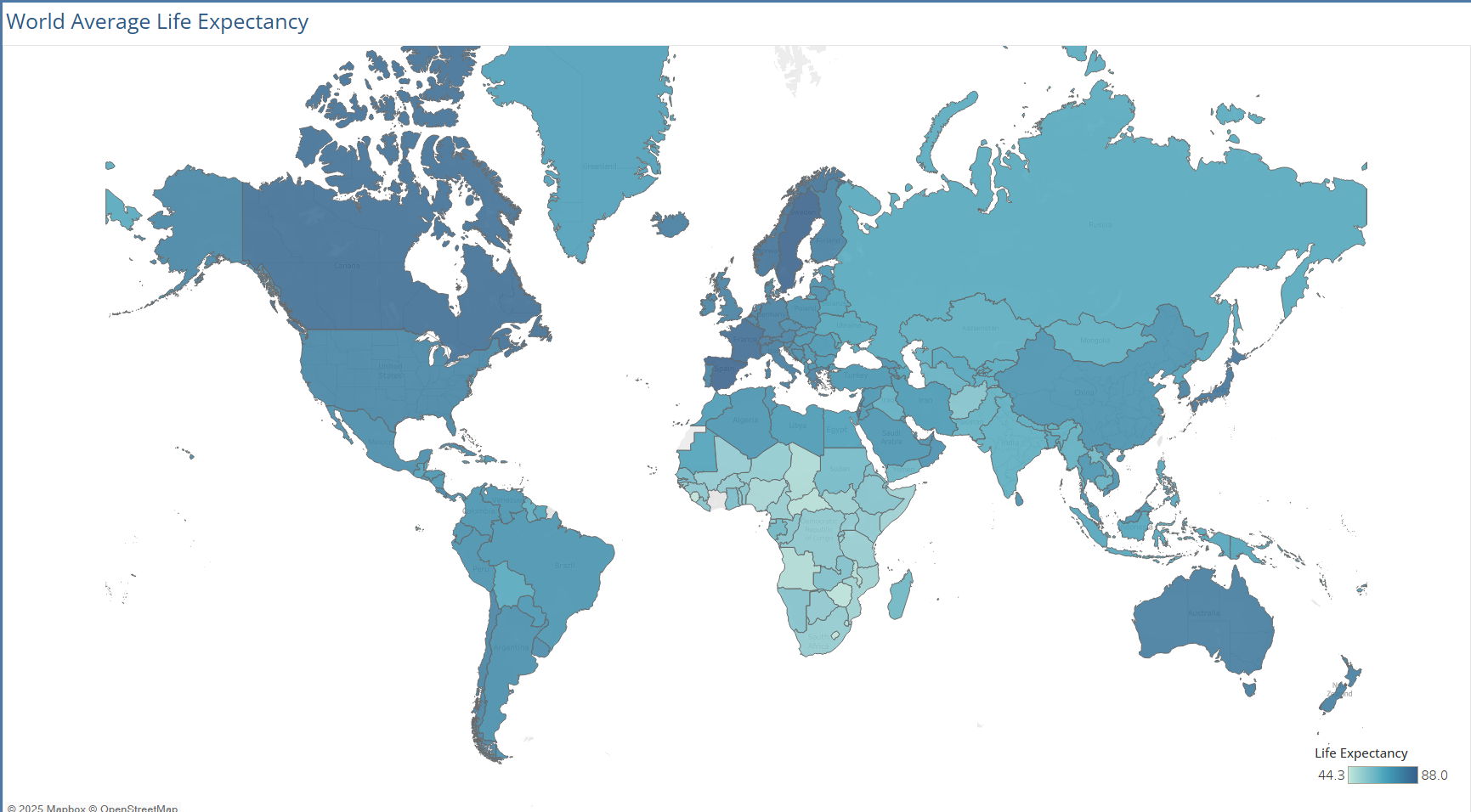World Life Expectancy
This project examines the average life expectancy in 193 countries around the world, for the years 2007 – 2022. Overall, life expectancy varies significantly across countries, as shown below.
Technical Details about the project can be found here: Project Technical Details

Life Expectancy Trends
- The worldwide average life expectancy has increased from 66.8 years in 2007 to 71.6 years in 2022, representing a 7.2% increase.
- A noticeable dip in the global life expectancy occurred in 2020 as a result of the COVID-19 pandemic.
- Haiti experienced the largest change in life expectancy from 2007 to 2022, from 36.3 to 65 years.
- Other countries, such as Zimbabwe, Eritrea, and Uganda, have also seen significant increases in life expectancy, suggesting positive health and economic development.
- The following countries are tied for the highest life expectancy, at 89 years: Sweden, Italy, Germany, France, Portugal, New Zealand, Finland, Norway, Spain, and Belgium.
GDP vs. Life Expectancy
- There is a positive correlation: countries with higher average GDP tend to have higher average life expectancy.
- CASE analysis shows:
- High GDP countries: higher count and life expectancy (~stronger healthcare systems, better living conditions).
- Low GDP countries: shorter life spans on average.
Developed vs. Developing Countries
- Developed countries have higher average life expectancy.
- Developing countries comprise a larger number of countries but typically with lower life expectancy.
Project Technical Details
Tech Stack & Methodology
- SQL (MySQL):
- Data Cleaning & Standardization
- Exploratory Data Analysis (EDA)
- Tableau:
- Surface Trends and Insights
- Data Visualization
- Dashboard Creation
Dataset
- The project used the following CSV file:
- world_life_expectancy.csv (2954 rows)
Project Files (GitHub)
- The SQL script can be viewed here: SQL Script
- The data file can be viewed here: CSV File
